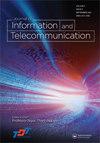Optimization of interval type-2 fuzzy system using the PSO technique for predictive problems
IF 1.7
Q2 COMPUTER SCIENCE, INFORMATION SYSTEMS
Journal of Information and Telecommunication
Pub Date : 2020-10-30
DOI:10.1080/24751839.2020.1833141
引用次数: 8
Abstract
ABSTRACT An interval type-2 fuzzy logic system (IT2FLS) can function well with uncertain data, with which a type-1 fuzzy logic system (T1FLS) is ineffective because its membership function rests upon crisp values. However, similar to T1FLSs, there are challenges associated with IT2FLSs in selecting parameters, which can significantly affect the accuracy of the classification results with their relatively high sensitivity. This paper discusses and proposes a hybrid model based on IT2FLS and particle swarm optimization (PSO) for prediction problems. The main objective of this paper is to find the optimal solution for the unknown fuzzy systems using labelled data for training the fuzzy system. The PSO technique was used to find the optimal parameters of the Gaussian membership functions which utilized for IT2FLSs. The authors tested two data sets for each of the two prediction problems, namely: burnt forest area prediction and wine quality prediction. The predictive results were compared with other predictive methods including random forest (RF), support vector machines (SVM), artificial neural network (ANN), adaptive neuro fuzzy inference system (ANFIS) and IT2FLS with parameters generated by using the fuzzy c-means algorithm (IT2FLS-FCM). Experiment results showed that the proposed method could significantly improve accuracy compared to several other predictive techniques.区间2型模糊系统预测问题的粒子群优化
区间2型模糊逻辑系统(IT2FLS)在不确定数据下可以很好地工作,而1型模糊逻辑体系(T1FLS)由于其隶属函数依赖于清晰的值而无效。然而,与T1FLS类似,IT2FLS在选择参数方面也存在挑战,其相对较高的灵敏度会显著影响分类结果的准确性。本文讨论并提出了一种基于IT2FLS和粒子群优化(PSO)的预测问题混合模型。本文的主要目的是利用标记数据训练模糊系统,找到未知模糊系统的最优解。利用粒子群优化技术寻找IT2FLS中高斯隶属度函数的最优参数。作者针对两个预测问题分别测试了两个数据集,即:烧毁森林面积预测和葡萄酒质量预测。将预测结果与其他预测方法进行了比较,包括随机森林(RF)、支持向量机(SVM)、人工神经网络(ANN)、自适应神经模糊推理系统(ANFIS)和IT2FLS,并使用模糊c-均值算法(IT2FLS-FCM)生成参数。实验结果表明,与其他几种预测技术相比,该方法可以显著提高预测精度。
本文章由计算机程序翻译,如有差异,请以英文原文为准。
求助全文
约1分钟内获得全文
求助全文
来源期刊
CiteScore
7.50
自引率
0.00%
发文量
18
审稿时长
27 weeks

 求助内容:
求助内容: 应助结果提醒方式:
应助结果提醒方式:


